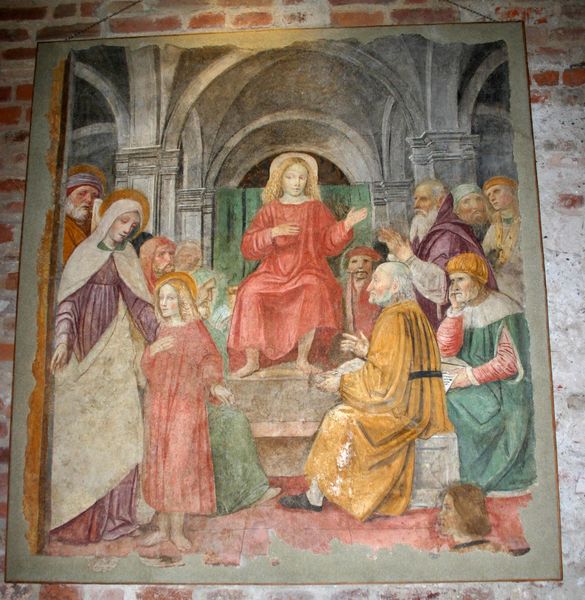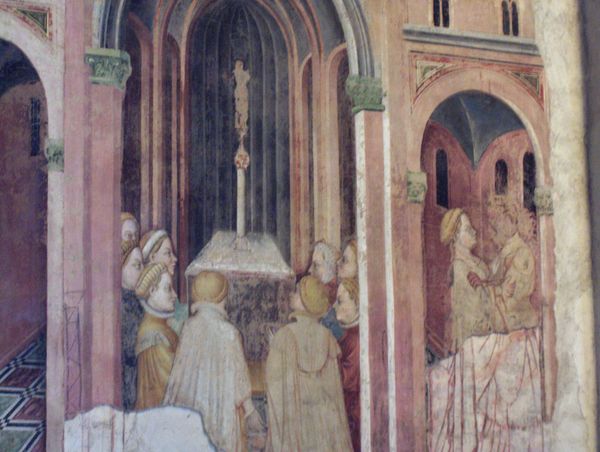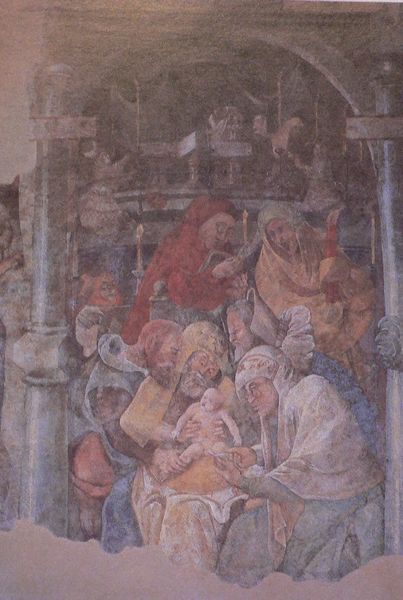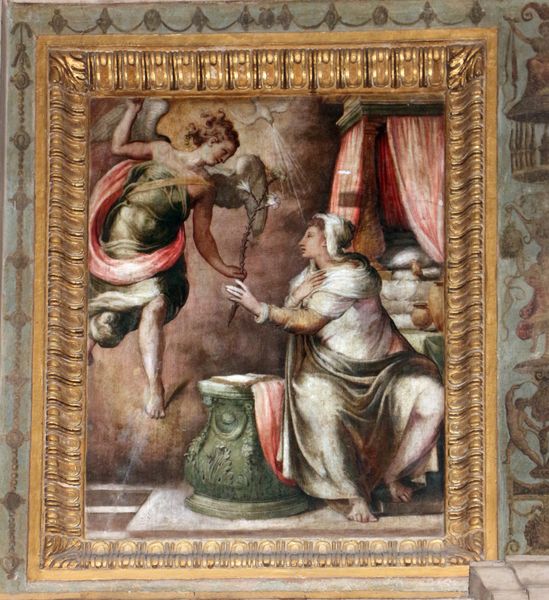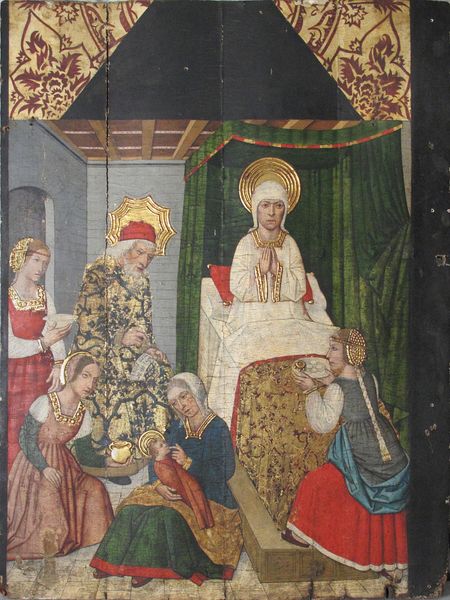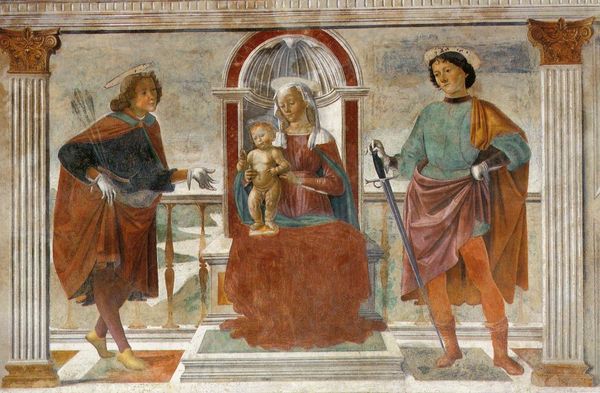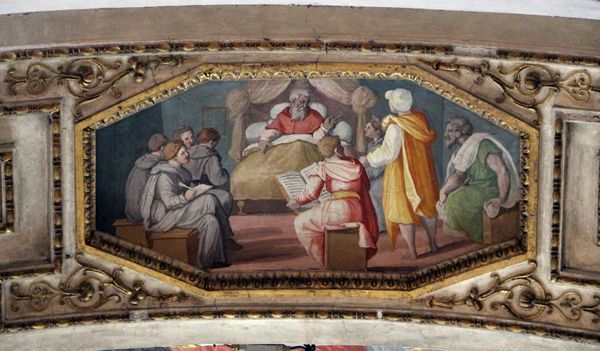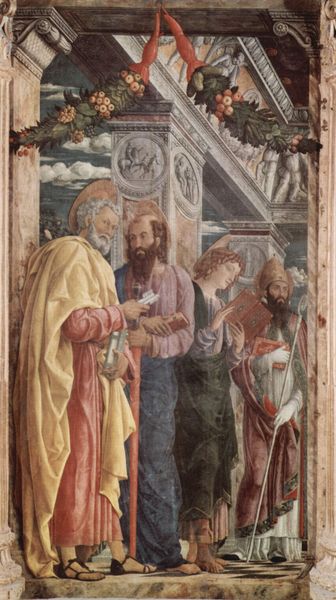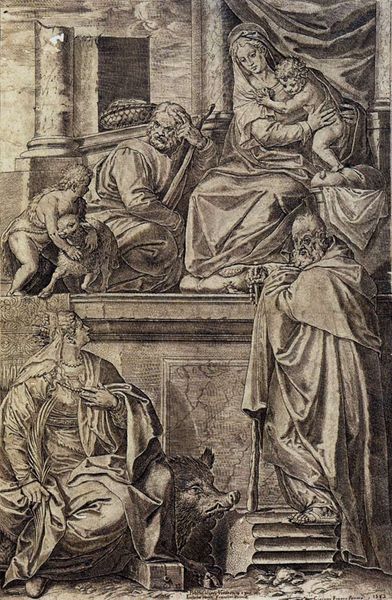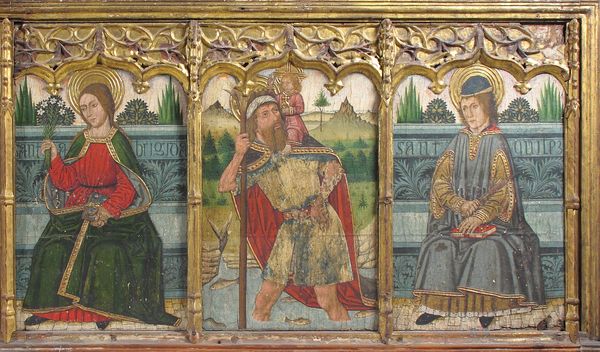
painting, fresco
#
narrative-art
#
painting
#
figuration
#
fresco
#
oil painting
#
christianity
#
men
#
history-painting
#
italian-renaissance
Copyright: Public domain
Curator: Immediately, a sense of hushed reverence fills the scene. The light is muted, the palette dominated by somber tones, despite the evident grandeur of the architectural backdrop. Editor: We’re looking at "Martyrdom of St. Thomas," a fresco that’s been attributed to Andrea del Castagno. Sadly, its date and original location remain a mystery. Curator: Well, mystery becomes it. This scene is clearly meant to stir feelings, to instill in the viewer an awareness of piety and its cost. The architecture almost cages the figures within it, further isolating St. Thomas as the drama unfolds. What’s particularly evocative to me is the contrast between the saint kneeling serenely, illuminated with light from the heavens, and the mob surrounding him, plunged into relative darkness and chaos. Editor: Indeed. It is potent, yet familiar imagery. The spear, prominently placed and angled directly at Thomas’ head, is an obvious instrument of his martyrdom, but it has carried different associations over the centuries, from weapons of war to symbols of divine power. Its appearance here clearly embodies violence, the ultimate form of earthly power used to silence religious truth. Curator: Castagno and his contemporaries were heavily involved in the political debates surrounding imagery in religious spaces. How should power be presented? What lessons were patrons expecting the artists to convey? I believe that there is much at play here, beyond simple veneration. St. Thomas as a political statement… fascinating! Editor: The composition draws us to the figures’ faces. The man poised to strike wears an expression of grim determination, maybe even regret. Are these figures meant to be understood purely as brutal executioners, or are we also invited to reflect upon the role they are being forced to play? Even in violence, symbolism provides a wealth of interpretation. Curator: Well, for me, this work invites us to think critically about how artists responded to the societal and political upheavals of their time. It certainly makes you think, doesn't it? Editor: Definitely. And I see in it enduring symbols, prompting reflection on power, belief, and the act of witness.
Comments
No comments
Be the first to comment and join the conversation on the ultimate creative platform.
